Who is Yuval Noah Harari?

Yuval Noah Harari is a historian, philosopher and Professor at the Hebrew University of Jerusalem. This book Sapiens was based on a series of his university lectures. Originally published in Hebrew, it was later translated to English in 2014 and became an international bestseller.
In Sapiens, Harari covers 2.5 million years of human history, but it’s not a dry repetition of names and dates. Harari doesn’t just tell us what happened, he also offers fascinating analysis about what historical events meant for the humans living today. From the discovery of farming, to the invention of money, to the rise of monotheistic religions, to the scientific revolution… they all changed our lives in ways you may not expect.
Now let’s dive into some of the biggest lessons from Sapiens!
🐒 1. Early Humans: The earliest humans shared most characteristics with other animals
2.5 million years ago, the earliest humans lived in East Africa. They ate fruits and nuts. They hunted small animals. They formed relationships. They competed with each other for status. But the most important thing is those early humans were essentially the same as other animals.
Over thousands of years, some humans went to Europe and Asia. The different environments caused many new species of humans to evolve. There were:
- Neanderthals in Europe and western Asia,
- Homo Erectus in eastern Asia,
- Homo Soloensis in Indonesia,
- And oh—ourselves—Homo Sapiens in East Africa!
- (And many more species….)
What happened to all those other human species? That’s a dark mystery Harari explores a little later...
All these early humans had far bigger brains than other animals. Early humans had brains 3 times bigger than similarly-sized mammals, while modern humans have brains 6 times bigger.
But those big brains came at a big cost. A big brain burns a lot of calories. How did humans get all those calories? Through cooking with fire. About 300,000 years ago, humans started using fire daily. This allowed them to eat new feeds for the first time, like potatoes and grains. Cooking also meant we spent far fewer hours chewing and digesting food than other animals. After thousands of years of eating cooked food, human jaws and teeth became smaller until they looked like we do today. By about 150,000 years ago, their physical bodies were identical to modern humans.
Although the earliest humans were not categorically different than other animals, our incredible brain growth (partly thanks to fire) set the foundation for us to become the complex thinking creatures we are today.
🧠 2. The Cognitive Revolution: Advances in thinking made homo sapiens masters of the world
From about 70,000 years ago to 30,000 years ago, the mental abilities of homo sapiens jumped past other animals. Harari calls this The Cognitive Revolution. During this time, humans began making advanced tools like boats, arrows and sewing needles. They made cave paintings and created sculptures. They worshipped religions and traded with each other. And most importantly, homo sapiens began communicating with each other using language.

Many animals communicate to each other in a basic way. They can make noises to get their mother’s attention or warn their herd of a predator nearby. But the language of homo sapiens was on a totally different level.
Language allowed humans to create totally new strategies, and let us work together in complex ways. You see, the behavior of most animals is programmed in their DNA. Wolves can hunt, but only using relatively simple strategies. But for example, ancient homo sapiens would chase a whole herd of animals into tight valleys, where they could easily slaughter them in large numbers.
Scientists guess that human language began either as a way to pass on survival information, or as a way to gossip. Survival information could include where to find food and water, or where to watch out for a predator. And the gossip theory is not as farfetched as it may sound at first—even today the majority of words in magazines, news or TV are about the actions or misbehaviour of important people.
Unfortunately, most details of the lives of those ancient humans are lost forever. But what do we know about them?
- They probably lived in tribes of a few dozen to a few hundred.
- They roamed around large areas of hundreds of kilometres searching for food.
- They rarely ran across members of other human tribes.
- They used tools, although most of those were made of wood not stone, so they decomposed long ago.
- They probably had some animistic religious beliefs, but we don’t know their specific myths or rituals.
In the end, Harari says there’s a lot more we don’t know about the lives and cultures of those early humans than what we do know. Were they violent or peaceful? Well, different fossil collections tell different stories, so this probably depended on the local culture, just as today there are safe and dangerous places in the world.
Now here’s a spicy question: were early homo sapiens monogamous or not? Harari says there isn’t a clear answer, but in a different book called Behave, Stanford Professor Robert Sapolsky offers a convincing explanation.
Sapolsky says when it comes to mating strategies, all primates have either a pair-bonding or tournament strategy. Pair-bonding primate species are mostly monogamous and the males help raise the kids after birth. Tournament species are non-monogamous, in fact only the 5% strongest males mate with all the females, and they don’t help raise the kids.
You can actually tell what mating strategy a primate species follows by looking at their sexual dimorphism, which means how different the males and females in the species are. In pair-bonding primates, males and females look about the same and are about the same size. While in tournament primates like gorillas, the males are much bigger than females and often look very different, because they evolved to compete with other males for mating rights.
Well, looking at human physical differences between the sexes, men are about 10% taller and 20% heavier than women. That suggests we are somewhere in-between a pair-bonding and tournament species. That’s probably why most human societies are mostly monogamous, but there is also casual sex, infidelity and polygamy in many places.
If this little detour was interesting to you, then go read our summary of the book Behave by Robert Sapolsky.
70,000 years ago, humans began using language to work together in complex new ways. This made us more effective than any other animal at survival and getting food. Humans also began making art, passing down cultural patterns and using advanced tools like boats.
⚔️ 3. Homo Sapiens Domination: Our species probably wiped out the other human species
So what happened to those other human species like Neanderthals? Today there are many types of pigs, rabbits and dogs for example—so why not multiple species of humans?
Homo sapiens began spreading from East Africa to Europe and Asia around 70,000 years ago. And pretty soon after we arrived in a new place, the other human species in that area became extinct. The fossil evidence is very suspicious and possibly incriminating for us.
There are multiple theories about what happened:
- One theory says homo sapiens interbred with other humans, eventually merging everyone into homo sapiens. Around 1-5% of modern human DNA does come from other species like Neanderthals. But it’s a very small percentage, which means that while some interbreeding did happen, it wasn’t too common.
- Another theory says homo sapiens outcompeted the other humans for food and other limited resources. With our bigger brains, we gathered food more effectively, leaving not enough for nearby human tribes to survive.
- Finally, there are theories that homo sapiens exterminated the other species. Yuval Noah Harari says this theory is entirely possible, considering how often even modern people have gone to war over minor differences in belief or skin color.
Whenever homo sapiens arrived in a new area, the other human species like Neanderthals soon died out. We either outcompeted them for food or exterminated them in conflict. Some rare interbreeding took place too.
🦴 4. Mass Extinctions: Early humans drastically impacted ecosystems, causing mass extinctions every place they arrived
The world used to be covered with many giant animals called megafauna.
There were five-ton sloths, giant camels and saber-toothed tigers in the Americas. There were wombats the size of hippopotamuses and oversized koalas in Australia. There were elephant birds twice as tall as a human in Madagascar. Then the homo sapiens came.
- 45,000 years ago homo sapiens reached Australia, probably by boat from the Indonesian islands. A few thousand years later, 23 out of 24 Australian animal species weighing more than 50 kilograms had become extinct.
- 16,000 years ago homo sapiens came to the Americas, probably following reindeer and mammoths across a temporary ice bridge over the Arctic Ocean. Within a couple thousand years, 34 out of 47 large animal species in North America became extinct. Then 50 out of 60 large species in South America. The pattern continues even to more recent times…
- 1,500 years ago humans came to the island of Madagascar, and their giant lemurs and elephant birds disappeared.
- 800 years ago humans arrived in New Zealand and—you guessed it—their large animals vanished too.
The large animals in Africa like elephants and rhinos had evolved in contact with humans, so they have a healthy natural caution towards us. But the large animals of other continents had never seen homo sapiens and didn’t consider them a threat. This meant they were probably very easy to hunt. They were like the giant tortoises that can be found on the Galapagos islands today, which have no natural fear of humans.

The uncomfortable truth is that humans have long been responsible for enormous environmental devastation. This should wake us up to the effects we are having on the world today. Harari says the large animals in the oceans are particularly vulnerable to being homo sapiens next victims, because of overfishing and industrial pollution.
Homo sapiens caused dozens of giant animals species to become extinct including giant sloths, camels and elephant birds. Soon after they arrived in a new continent or island, the big animals died out according to the fossils.
🌾 5. The Agricultural Revolution: The invention of farming increased our population, but lowered quality of life
For most of human existence, we fed ourselves through hunting wild animals and gathering wild plant foods like vegetables, fruits, nuts, etc. Then one day this all started to change.
Around 9500 BC, people living around the eastern coast of the Mediterranean Sea began growing their own foods. Natufian settlements in the area at that time used mortars and pestles to grind grains into flour. They even had stone granaries.
This change from hunting-gathering to farming was probably gradual. First ancient people only gathered wild grains for food. At some point, they discovered they could help the grains grow better by pulling weeds, tilling soil, bringing water… so they did. The shift from hunting to raising animals was similar. First humans decided to protect a herd from other predators, then they avoided killing the fertile females and young animals… Eventually they were spending most of their time shepherding rather than finding animals in the wild.
The Agricultural Revolution caused the human population to explode. 12,000 years ago there were only several million humans around the world hunting and gathering. By about 2,000 years ago, there were over 250 million humans farming.
“History’s Biggest Fraud”
However, Harari calls the Agricultural Revolution “history’s biggest fraud” because although farming did allow humans to grow in population dramatically, it also led to a worse quality of life for the average person. Why?
- Worse health: Grains are poor in vitamins, and very bad for our teeth and gums. The diet of a hunter gatherer had far more nutrition from meat, fish, fruits, vegetables, grasses, roots, nuts and seeds.
- Famines: When most people became dependent on one or two staple crops, then a lack of rain or a new fungus caused masses of people to starve. Since hunter gatherers relied on a wider variety of foods, they were less vulnerable to these problems.
- Diseases and plagues: Living closer together in larger villages and cities encouraged the spread of sickness.
- Longer work hours: Modern hunter gatherers like those living in the Kalahari desert only spend 35 to 45 hours every week getting food. That’s far less than most farmers in the past, and less than many modern office workers!
This discrepancy between evolutionary success and individual suffering is perhaps the most important lesson we can draw from the Agricultural Revolution.
Humans began farming because each individual step forward appeared to give them more food. But they could not foresee the longer term future consequences of their actions. They had more kids who ate the excess food. In the end, it looks like most farmers worked harder and longer hours than their hunter gatherer predecessors.
Today we see the Agricultural Revolution as the foundation of the prosperity and security that most of the world enjoys. And that may be true. However, most of history during agriculture looked very different. There were 12,000 years of peasants breaking their backs doing hard manual labor all day.
Around the Mediterranean Sea, humans started growing crops and raising animals. Farming dramatically increased the human population. Yet compared to hunter-gatherers, farmers had worse health, more famines, more disease and longer work hours.
📜 6. Common Myths: Shared beliefs and stories unite people, allowing millions of strangers to cooperate
How are modern people able to create space stations and nuclear generators? Through the mass cooperation of millions of people, from miners to physicists to engineers to janitors. Together we can accomplish feats far beyond the imagination of any other animal. Sure, a single human can make tools, but even chimpanzees use basic tools like using twigs to fish termites out of the ground.
It’s really our mass cooperation that sets us apart from other animals. That’s why it was such an important revolution in human history, that we began living together in large numbers.
In prehistoric times, the largest villages contained a few hundred people at most. In 7000 BC, the largest city was probably Çatalhöyük which had up to 10,000 people. But with agriculture, cities steadily grew in size. By 1776 BC, Babylon was the world’s largest city, containing tens of thousands of people. It was part of the Babylonian Empire, which had more than a million people as subjects.
Yuval Noah Harari says the belief in common myths like nations, laws, money, corporations and gods are what allow large numbers of sapiens to live and work together.
For example, the ancient Babylonian Empire was based on a system of laws called the Code of Hammurabi. This “code” consisted of about 300 rules created by one of the first Babylonian rulers named King Hammurabi.
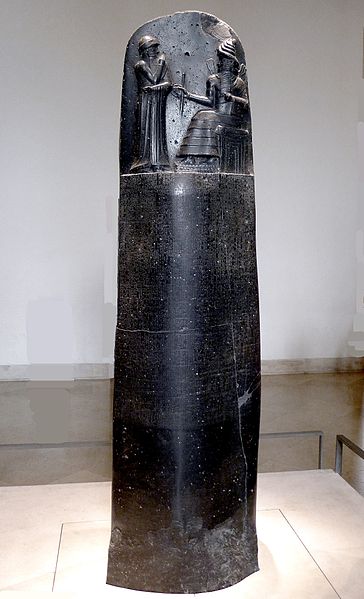
Many of the rules in the code were about punishments for specific crimes. The punishments were different depending on the class of the perpetrator and victim. Hammurabi’s code divided society into three classes: superiors, commoners and slaves. For example, if a superior man blinded the eye of another superior man, his own eye would be blinded. (This is where the expression “an eye for an eye” comes from!) But if a superior man blinded the eye of a commoner, then he would only have to pay 60 shekels of silver as punishment.
By modern standards, giving people different punishments based on their social class (and gender) doesn’t feel very just. But the Code of Hammurabi brought order to the Babylonian Empire. It continued to be copied down by scribes for generations after Hammurabi’s death.
At the beginning of Hammurabi’s Code is a very interesting statement that says the top Mesopotamian gods such as Marduk personally appointed Hammurabi as ruler to bring justice to the land and “prevent the strong from oppressing the weak.” This is a common pattern in most societies even today—the fundamental myths are said to be based in some supernatural order, rather than simply being human made. This brings a sense of stability to the myths that hold up the social order.
Of course, today nobody follows Hammurabi’s Code and few people believe in Marduk. But are we really so much different today?
The American Declaration of Independence begins by saying it is founded on “Nature’s Laws and Nature’s God” and then says “We hold these truths to be self-evident, that all men are created equal, that they are endowed by their Creator with certain unalienable Rights […]”
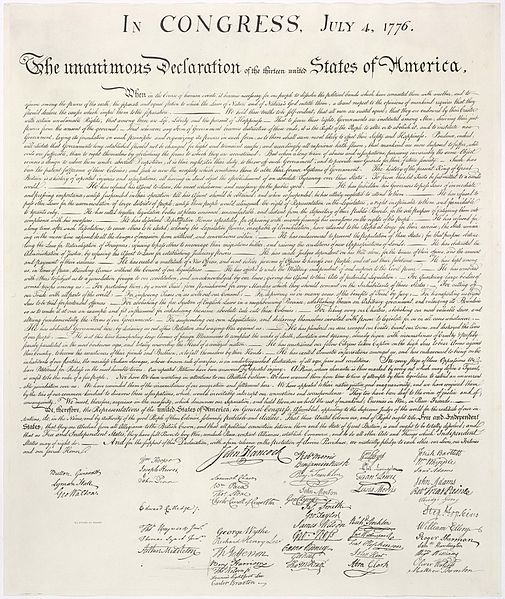
Most modern people believe in ideas like equality and human rights as sacred and eternal principles, but where did those ideas come from? Harari says they were founded on the Christian belief that every person has a soul created by God, and we are all equal in front of God’s judgment. Certainly people are not equal or identical in any biological sense, because we all are born with different DNA and different natural talents. You also won’t find any discussion of human rights in a quantum physics textbook.
Equality and human rights laws are imagined orders in exactly the same way Hammurabi’s Code was. But that doesn’t mean they don’t exist. When imagined orders exists in the minds of masses of people, then they have real influence in the physical world. They allow us to create orderly and successful societies.
Imagined orders are not evil conspiracies or useless mirages. Rather, they are the only way large numbers of humans can cooperate effectively.
Mass cooperation is what fundamentally separates humans from other animals. By working together, we can create space stations and medicines. And what enables millions of people to live and work together are common myths, myths like money, laws and nations.
💰 7. Money and Trust: Currencies rely on shared belief in their value; they’re one of the most important common myths
For most of human existence, people lived in small tribes where everyone was familiar with each other. So if your neighbour gave you their extra meat last week, then they assumed you would pay them back in the future somehow. Obviously, when people started living in larger settlements with a lot of strangers, this system no longer worked very well.
Sometimes prehistoric people also bartered, which means trading one item directly for another item, like my bag of apples for your boots. Bartering also has some big limitations, such as always needing to find someone who has what you want AND wants what you have to offer.
Then money was invented
When most of us hear the word money, we probably imagine coins or paper bills. Yet that’s not what money really is. Money is just whatever people use to systematically represent the value of other things. And many objects have been used as money in the past:
- Barley was used as money in Sumer around 3000 BC. This is actually the earliest known form of money. Ancient Sumerians bought and sold goods in exchange for cups of barley. People probably found it easier to accept barley as money in the beginning because it has some inherent value—you can eat it!
- Cowry shells were also used as money all over Africa and Asia for thousands of years. These small shells can be stored a lot more easily than grains because they don’t rot or attract rats.
- Gold and silver then became the most popular form of money. These soft shiny metals have no inherent value. They can’t be eaten or turned into weapons, but they are far easier to store than cups of barley.
- Coins started being used around 640 BC by King Alyattes of Lydia. Coins offered the benefit of standardized weights of gold or silver. They were also stamped with the mark of a king, which helped people trust the value of the coin more, because everyone knew counterfeiters would be severely punished by the king.
- Virtual data. Today 90% of money only exists virtually inside of computer servers. This doesn’t change its fundamental nature, because money is simply a system of mutual trust rather than specific objects.
Cowry shells and dollars have value only in our common imagination. Their worth is not inherent in the chemical structure of the shells and paper, or their colour, or their shape. In other words, money isn’t a material reality – it is a psychological construct.
Money connected total strangers around the world, allowing them to trade even without pre-existing trust. We’re often blind to how deeply international trade has shaped our cultures. For example, tomatoes are often considered a staple of Italian cooking, but they only arrived in Europe for the first time 400 years ago from the Americas! That’s also true for potatoes, which are often considered the most essential part of Irish and Polish kitchens.
Money is not coins or paper bills, but an incredibly useful common myth. Throughout history, people have used many forms of money, including barley, sea shells, gold, coins and virtual numbers. The dollars of a country have value only because everyone agrees to accept them in exchange for their labour or goods.
🏛️ 8. Empires’ Dual Role: Imperial rule oppressed people, but also unified them
Several thousand years ago, most humans lived in small cultural bubbles, barely aware of the existence of other cultures. Yet today the world is becoming more and more a single global culture. To a great degree, empires caused this change over the past 4,000 years.
An empire is a political order that rules over at least several distinct cultural groups, and it can flexibly expand its borders to swallow more groups.
The first empire was probably the Akkadian Empire of Sargon the Great which happened about 2250 BC. Over a few decades, King Sargon went from king of one small city state, to the ruler of all the other Mesopotamian city states, an area that covers most of Iraq and Syria today.
Then around 500 BC, a much larger Persian Empire was founded by Cyrus the Great. This Persian Empire was fundamentally different than previous empires because Cyrus claimed he was conquering new people… for their own benefit. He created the idea of a benevolent ruler, a template which was copied by most empires that followed. From that point on, empires usually justified their expansion by claiming they were spreading a more advanced culture throughout the world, in the form of laws, writing, money, arts, religions, etc.
In empires, the ruled and ruling people sometimes merged into one group. For example, the Roman Empire conquered many foreign cultures, but over generations those foreigners became more and more Roman, until eventually they were granted Roman citizenship. Many of the last Roman emperors actually had a non-Roman ethnic origin.
The Han Empire, which ruled China around 2000 years ago, also assimilated many separate cultural groups into one. They were so successful that today 90% of people in China define themselves as Han.
Today empires and imperialism are often viewed very negatively. Some people say all traces of past imperialism should be removed to reclaim a nation’s ‘authentic’ culture.
On the one hand, yes it is true that past empires were often brutal, tyrannical, committing slavery, war and genocide. But they also shaped many positive aspects of modern countries that used to be ruled by empires. They contributed arts, culture, development and more.
For example, few Indian people would want to rid their country of British imports like tea, railway systems, the English language and western-style democracy. And even before the British arrived, the Mughal Empire ruled India for hundreds of years, demanding peasants pay up to half their labour in taxes, but also leaving behind cultural treasures like the Taj Mahal.
An empire is a political order that can flexibly expand its borders, swallowing more and more groups of people. Empires spread standardized languages, laws and religions, leading to more global connectedness.
🔬 9. The Scientific Revolution: Advances in science were driven by imperialism, creating a world of constant change
The basic principles of science are admitting that we don’t know everything and learning new things through observation. Today we take these fundamental ideas of science for granted that we don’t realize how revolutionary they were at the time.
For most of human history, people were not interested in discovering new knowledge. People generally assumed that past scriptures contained all the knowledge that was worth knowing, so the best they could do was study those old teachings and pass them on.
Then around 500 years ago, scientific discoveries began reshaping our world at a speed never before seen, giving homo sapiens incredible new technologies and powers. That’s why the human population exploded from 500 million to 8 billion in the past 500 years. Imagine a peasant from the middle ages waking up today to smartphones, skyscrapers, space stations and modern medicine. They would be totally bewildered!
So what drove the incredible scientific progress? That answer may surprise you.
Science can be expensive. Scientists need laboratories, telescopes, chemicals, equipment, travel, etc. Who provided these resources? Usually governments and businesses. And they choose to fund the scientific projects which will hopefully help them reach their political, economic or military goals.

In many of the earliest expeditions to the New World, ships contained scientists making observations, as well as soldiers looking for gold and other resources. You cannot really separate the scientific goals from their imperial and military goals which often funded the whole expedition.
For example, in 1768 the famous James Cook expedition led to the European discovery of Australia and New Zealand, lands which Cook quickly claimed for the British Empire. The expedition originally started out with the goal of make an astronomical observation about Venus from the island of Tahiti. Yet without the potential military payoff, the scientific part of the expedition would never have been funded. (Another big discovery on that expedition was that eating fruits and vegetables stopped sailors from dying of scurvy. That life-saving medical insight helped the British Navy rule the seas.)
Another example: in 1831 the British Royal Navy sent a ship to explore the coasts of South America to create military maps. Along for the ride was a recent Cambridge university graduate named Charles Darwin. His observations on that trip led to the theory of evolution.
In the past 500 years, science has changed human societies beyond recognition. Many of the earliest overseas expeditions contained both scientists like Charles Darwin as well as soldiers pursuing military goals. It’s difficult to separate science from the political, economic and imperial goals which funded it.
🏢 10. Modern States: In today’s world, states and markets increase person freedom, but weaken social bonds
Until very recently, your family and local community were all-important. They were your social security net, your health insurance, your retirement plan (in the form of kids), and more. A couple hundred years ago, if you were banished from your family or local community, then to survive you may have needed to go into slavery or worse.
Today the state and market are taking over many of the old roles of family and community. Governments provide social security, pension plans, healthcare and more. Private markets provide services like daycare for kids and caretakers for aging parents.
On the one hand, this change gives us more individual freedom than ever. Most of us no longer need the approval of our parents about who to marry, where to live or what career to pursue. We can go and find a community of people to be part of, rather than trying to fit into whatever village we happened to be born in.
And yet today many modern people are left feeling alone and estranged by our increasing reliance on states and markets. Humans, having evolved for thousands of years in tightly-knit tribes, perhaps feel happier belonging to a community than as a disconnected individual. Today we are free to choose who we associate with or marry, but that also means they are free to leave or divorce us.
However, even our needs for emotional bonding are now being fulfilled more by markets. Many people today find community by belonging to consumer tribes, like being fans of the same music artist or sports team. We buy posters, clothing or event tickets to be part of the tribe.
Today we rely less on our families and local communities, and more on the state and market to provide security. This means we have more individual freedom than before, but also less feeling of belonging to a tight-knit community.
🤔 11. The Future & Happiness: Did all this progress improve human happiness at all? And what lies ahead?
Yuval Noah Harari ends the book on a more philosophical tone. He says historians don’t often ask questions about the effects of historical events. But we should. And the most important question may be: has all this material progress made homo sapiens any happier?
At first glance, many of us would say yes. I mean, who’d want to go back to a time of being a peasant in the middle ages or being chased by lions in ancient Africa? But Harari says the answer may be not so simple for 3 reasons:
- People are generally very bad at guessing what will make them happy. Studies find that both people who experience something very positive (like winning the lottery) and very negative (like becoming an amputee) only feel different for a short time. After a year, their level of happiness returns to the same level as everyone else’s.
- Happiness may be more about our expectations than about what we actually have. Modern people have air conditioners, daily showers and airplanes, but these don’t make us wildly happy every day. We have come to expect them. In the same way, people in the past who lived in more poverty, hardship and filth may not have really noticed their poor conditions.
- Happiness may be more about meaning than comfort. The psychologist Daniel Kahneman found that the daily work that comes with being a parent is rated by most people to be very unpleasant. The work like changing diapers and calming temper tantrums. However, parents also usually rate their kids as their greatest source of joy and happiness. Although the work of being a parent isn’t fun, it is deeply meaningful.
The psychologist Viktor Frankl survived the concentration camps of World War 2. He saw the prisoners who survived the camps were the ones who could find a source of meaning in the middle of the terrible suffering. Those who couldn’t find meaning eventually gave up and lost their lives. He says the 3 main sources of meaning are:
- Through work (doing or creating something significant),
- Through love (relating and caring for others), and
- Through facing suffering with courage, when it’s unavoidable.
If you want some deep insights into finding meaning in your own life, then go read our summary of Man’s Search for Meaning by Viktor Frankl.
So if meaning is the important part of life that makes it worth living, then modern people could be worse off than our ancestors. Studies show people feel their close relationships are the most meaningful part of life. And that means the modern trends of weaker family cohesion and rising divorce rates may be leading to less happiness than before, despite more comfortable living conditions.
Religion is also on the decline in many Western countries. This was a major source of meaning for people throughout history. A peasant living in the middle ages may have had a very hard life, but they could look forward to eternal life in heaven with the Creator at the end of it. Meanwhile, a modern secular person may have more comfort and security now, but they can look forward only to slow physical disintegration at the end of their life, followed by nothing.
While we’re still thinking about whether history was worth it at all, Harari offers some guesses about what the future may bring for humans.
Scientists can already genetically engineer worms to live longer, mice to be smarter and voles to be monogamous. If these changes can be brought to humans (and there’s no reason to believe they can’t), then at some point in the future we may be unrecognizable. And that may be the end of homo sapiens as we know it.
Modern people are very comfortable and secure, but does that mean we’re any happier? People get used to new conveniences, quickly taking them for granted. Most people have found meaning in life through family, marriage, close relationships and religion, which are less stable than in the past.

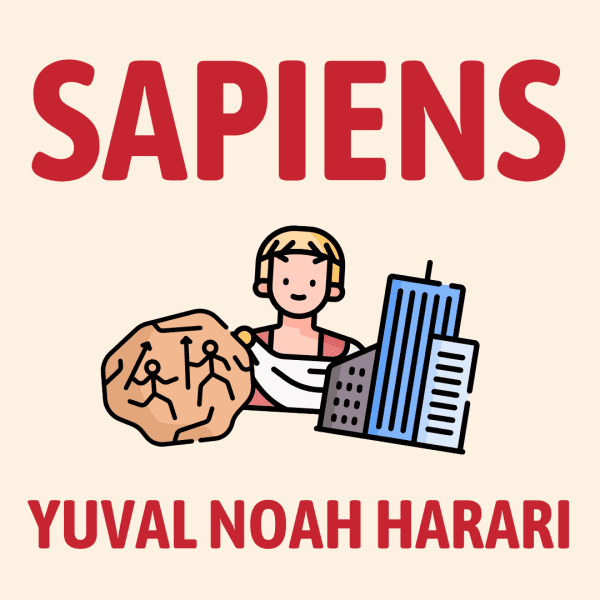
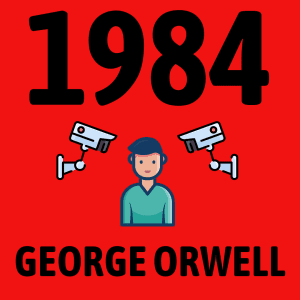
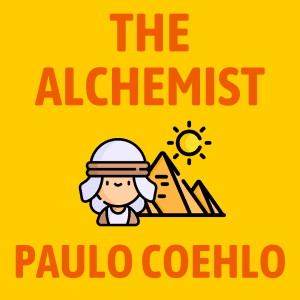
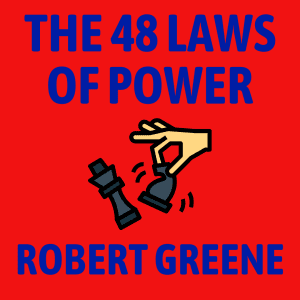
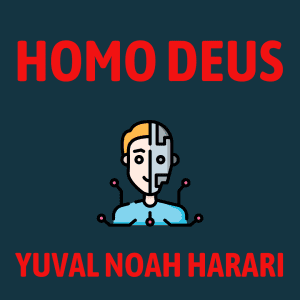

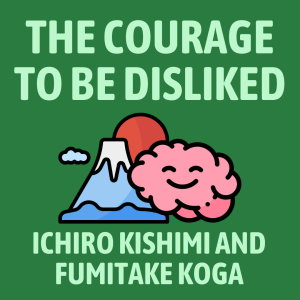
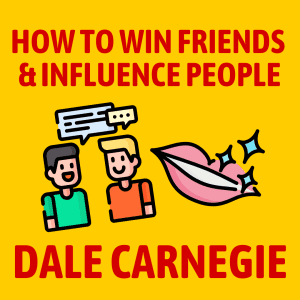
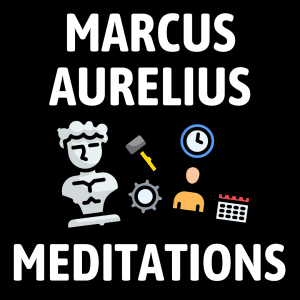
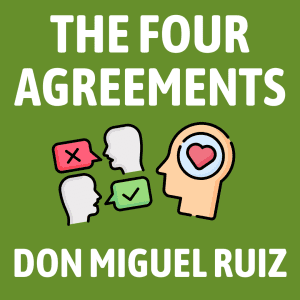
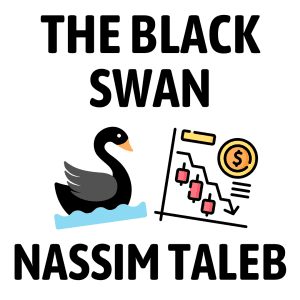

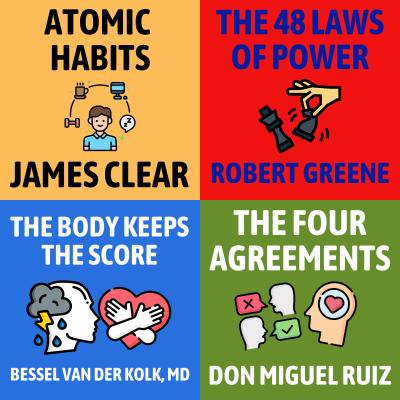
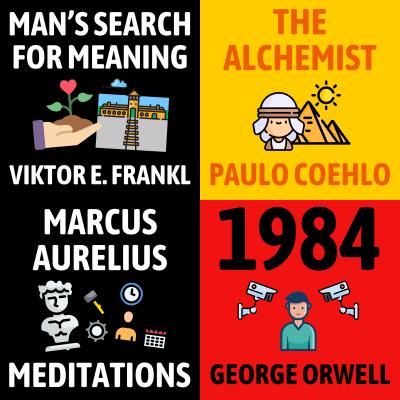
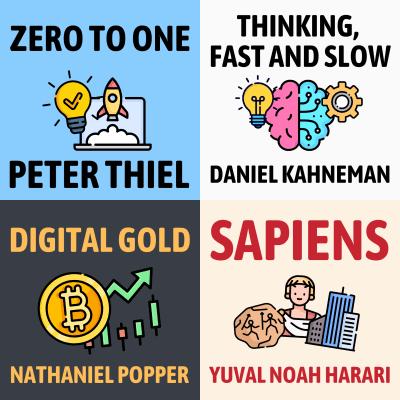













Community Notes